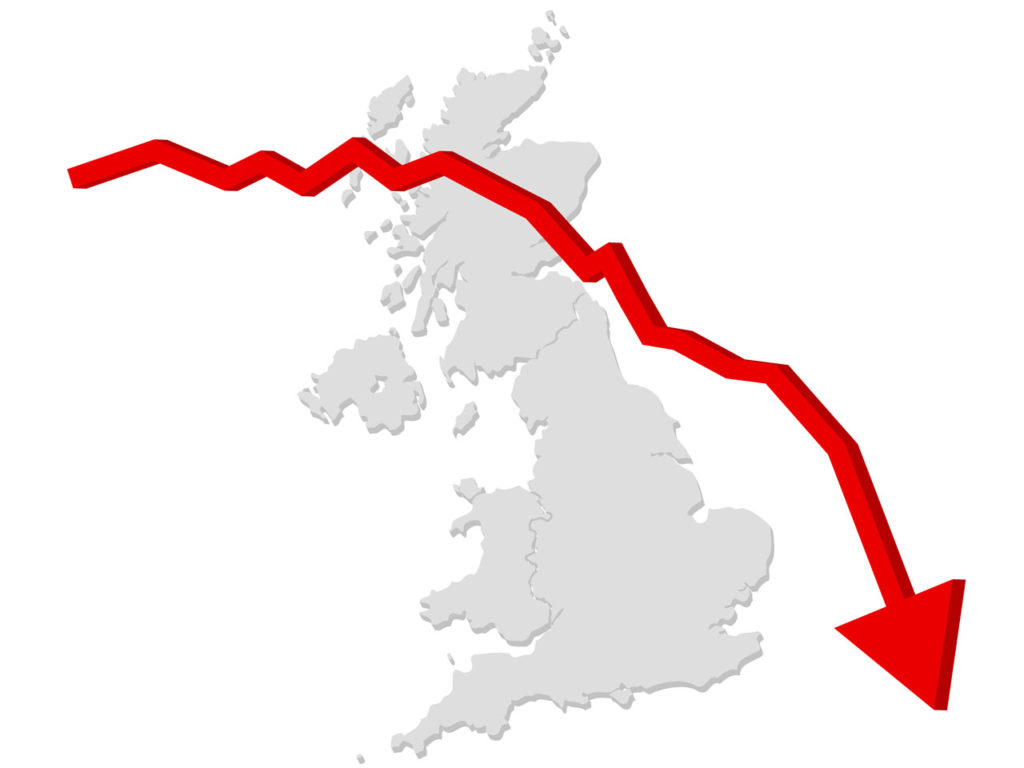 Engage Management Consultants have recently concluded a study that suggests UK brands face a potential financial crisis in the short term. Whilst the UK manufacturing industry as a whole faces slow growth rates and rising input costs driven by currency devaluation, the UK’s consumer brands face a unique set of financial pressures arising from the actions of their retail customers. Here I look at these unique pressures and look into some of the actions that leading brands are taking to mitigate the worst effects.
Engage Management Consultants have recently concluded a study that suggests UK brands face a potential financial crisis in the short term. Whilst the UK manufacturing industry as a whole faces slow growth rates and rising input costs driven by currency devaluation, the UK’s consumer brands face a unique set of financial pressures arising from the actions of their retail customers. Here I look at these unique pressures and look into some of the actions that leading brands are taking to mitigate the worst effects.
For decades brands have depended on the supermarket trade for much of their sales but Engage’s study shows the supermarket industry to be in systemic decline. Supermarkets and larger hypermarkets together currently deliver over 70% of brand sales for many manufacturers, therefore, this decline is not only bad news for brand growth but it is also likely to undermine the financial health of UK brands.
UK Brands and Retailers are Poor Bedfellows
Major supermarket retailers have become effective at encouraging investment from brand manufacturers. By demonstrating the value of their shopper base and using price promotions to build this base further, they have secured greater levels of funding. This has never been an easy relationship: UK brands and retailers often have conflicting goals and retailers have driven a hard bargain. Already, many manufacturers find that, in the UK, they spend up to 15% of gross sales to support their brands in supermarkets and hypermarkets.
In today’s environment, supermarkets are seeing footfall decline as shoppers turn to new retail environments for grocery purchases and this is leading to new, more aggressive trading strategies that will erode brands’ financial performance potentially provoking a financial crisis for some UK brands.
Retail Consolidation
The UK grocery sector has long been dominated by large players however, the newly concluded merger between Tesco and Booker and the forthcoming merger of Sainsbury and Asda will make the UK grocery sector one of the most consolidated in the world, with potentially more than 60% of the market’s sales in the hands of just two players.
Mergers of this scale are bad news for sales teams. They force sales teams to renegotiate. Often historic deals that are fraught with discrepancies which teams must unpick. but also the newly-created entity demands both readjustment and recognition of its larger trading status. Recent similar mergers in other markets, for instance, Thailand, have led to a reduction of margins in the order of 1.5%, which is significant in an industry who’s average margins had fallen to just under 10% by 2015 (according to Deloitte).
Retail Price Competition Stresses UK Brands
As the supermarket industry declines and the number of players reduces, competition is set to increase. Incumbent players will seek to drive greater market share even before the Sainsbury / Asda merger goes through. Naturally, they will do this by driving retail prices down in their stores with the cost of these price reductions largely being passed on to manufacturers.
At a time of increased cost pressure and growing uncertainty about the impact of Brexit this will also inevitably lead to lower trading margins for brands in the UK, both this year and within 2019. But price competition and changes in shopper behaviour are also likely to impinge on the return on capital employed that retailers enjoy which means they will take further action that will impact on their suppliers.
Retail business model restructuring
Retailers depend on returning high levels of cash to underpin the low operating margins they make. This high level of liquidity enables supermarket retailers to deliver attractive returns on capital to their investors. Engage’s research has uncovered that major global players like Tesco and WalMart have seen a consistent decline in their returns over the last five years. As a result, both retailers have taken two significant steps to address this.
Firstly retailers are reducing the inventory they hold by cutting the number of brands they stock and by holding lower inventory of the remaining brands on their shelves. As a result the total sales that a brand enjoys from retailers taking such action reduce, on average, by close to 2%.
Secondly, retailers are simply paying more slowly. In Tesco’s case bills are paid 10 days slower on average than they were 5 years ago, reducing some UK brands’ ready cash flow by over 3% per annum.
Tough choice to avert a financial crisis
All this means that Finance teams in the UK are now making tough calls on their businesses. In our conversations with functional heads across Sales, Marketing, Insights, and HR, we are consistently hearing that budgets are being slashed. This means that bonuses are smaller and harder to come by, above and below-the-line activity budgets are being reduced or ring-fenced, research plans are being pared back or canceled and employee development initiatives are being shelved.
Industry leaders respond
The leading lights in the industry are doing just this: rapidly taking proactive steps to mitigate risk and even prosper from the countless opportunities that this new environment presents. Many of the largest players are currently taking steps to better understand the fast-evolving UK retail landscape, to reassess retail channel priorities as well as to redefine and crystallise future sources of brand growth.
This is leading to a concerted multi-functional effort across consumer marketing, customer marketing, and sales, as these combined teams collectively reconsider customer priorities, build more integrated brand and customer plans and determine a vision for the ‘store of the future’. Many of these leaders are taking the opportunity to assemble real and virtual customer-focused teams across all relevant commercial, financial, operational as well human capital development functions, with the aim of blending the best resource to deliver against cross-functional initiatives which will underpin future sustainable growth.
These businesses are well placed to weather the storm, however, they represent only a small minority of the UK’s branded manufacturers. Many of the others are struggling to identify where to start and how to engage cross-functionally to formulate a response.
There are accessible resources available
To support leaders and managers in the industry during these tempestuous times, Engage has partnered with a team of UK and Global industry experts in order to build a roadmap that describes the key actions that companies should be planning for the future as well as helping them to identify immediate opportunities to begin working together ever more closely as a team.
Both the roadmap and Engage’s findings are freely available to managers in the consumer goods sector. If you would like our experts to share these with you as well as taking the opportunity to discuss some of the specific issues that you face, then please get in touch.


